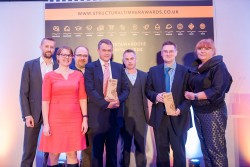With the number of professionals involved in the design and construction journey, the structure and composition of project teams changes throughout the duration of each project. Due to individuals providing specialist knowledge and components during each phase of the build - there is a requirement for enhanced collaboration within the construction industry, which has often been described as fragmented.
Working in such a project-based industry can be challenging due to the interactions taking place between many unfamiliar personnel for a relatively short period of time. This can complicate an already demanding environment when it comes to communication, in which technical language and mixed skillsets are so prominent. Failure to establish clear and efficient procedures and collaborative practices across the teams can be problematic.
However, when executed accurately, it is a great incentive for main contractors to retain project teams across numerous builds. By forming strong relationships and good working practices - seamless collaboration can be achieved across construction teams.
With the use of BIM technology, which is now at the forefront of almost every construction project in the UK, the industry is able to collaboratively tackle challenges. BIM models define objects as building elements and systems which encompass all the information related to the project and its processes. This allows multi-disciplinary teams to work in unity, bringing their design data into a single intelligent model. This process helps to identify design faults, predict and execute the desired building performance, as well as assess and address lifecycle issues during the design stage.
In order to reap the maximum benefits of succinct teamwork during a project, collaborative practices must be incorporated at the very beginning of the initial design process. This can include procurement routes, problem resolution procedures and information management procedures.
The benefits of this approach were clearly demonstrated throughout the design and build of the BSkyB Believe in Better Building project which involved high levels of collaboration. This typically comprises a mixture of 3D CAD for concept work, and 2D for drafting of statutory approval documentation and Production Information. CAD standards are managed to BS 1192:2007 and electronic sharing of data is carried out from a common data environment (CDE), often managed by the contractor. In this instance, architects and engineers worked together in a shared office throughout the project – allowing them to make real time decisions. Due to the speed of build that the structure provided, the X-LAM team based themselves alongside the design team in order to contribute to the decisions while they were being made.
A key demonstration of the use of collaborative working during this project was shown through the detailing of the windows and the interface between them – with the cassettes and glulam frame. As the teams were based in the same office, workshops were able to be quickly assembled in order to ensure the correct details could be developed to meet the requirements for the whole team.
It is clear that there is an imperative to improve industry performance, with increasing requirements to design and construct in a more detailed manner and at a rapid pace – these processes are reliant upon effective communication. Construction professionals must work together to steer the industry towards a more collaborative culture through the use of innovations such as BIM technology.
Learnings and Understanding
The X-LAM Alliance can assist at every stage of your construction journey – from pre-tender design through to onsite delivery and everything in between.
As industry specialists, the X-LAM Alliance offer one hour CPD seminars. These development sessions are tailored to meet the requirements of architects, engineers, specifiers and cover the technical and performance benefits, including an introduction to the CLT Construction Specifier, which will open the gates to value engineering and associated cost savings at a much earlier stage in the design process/procurement process.
For more information please visit: www.xlam-alliance.com









